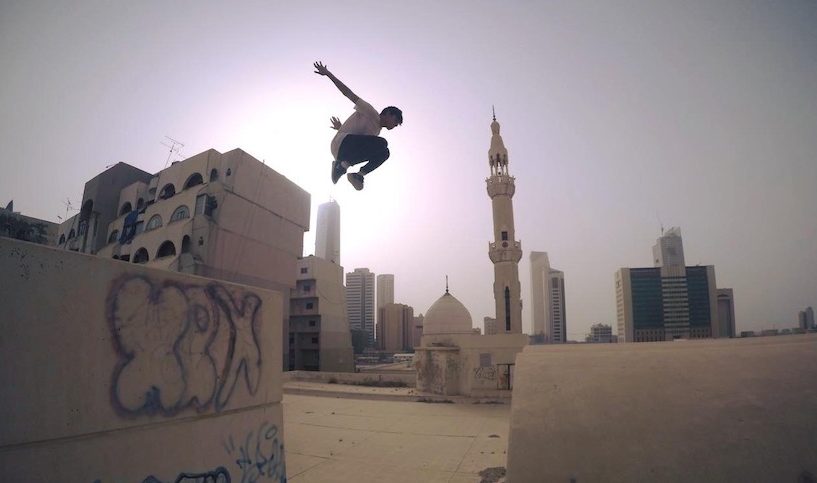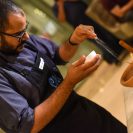Spark, the 21-year old Lebanese parkour athlete who grew up in Kuwait gained notoriety in 2017 after vlogging about climbing the tallest building in Kuwait, Al Hamra. He had already climbed it three times. Like the invisible man, he has a knack at getting past security. He vlogged his third attempt on social media, it went viral and made him famous.
The first thing I learned about Spark, who has 200k followers on his YouTube channel where he documents his parkour adventures, is that he has a wicked sense of humor. I was trying to find a venue to interview him. “I’m fine anywhere but if the meeting would be on a rooftop or a crane that would be recommended,” he said.
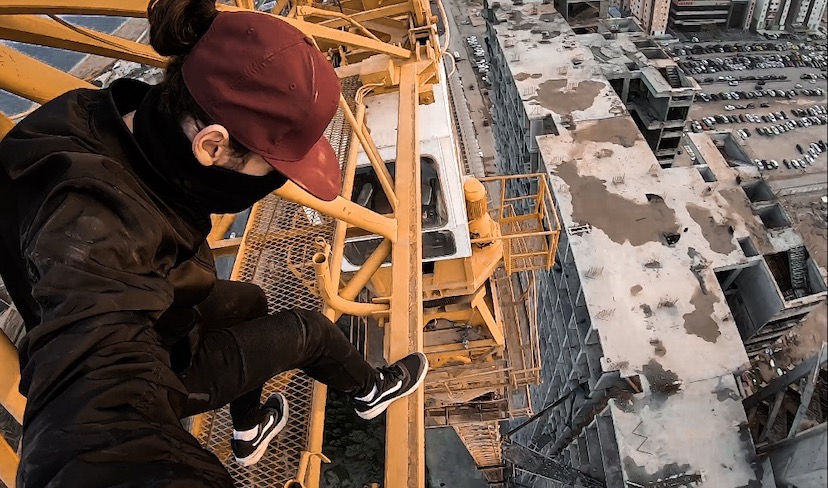
Because this journalist is afraid of heights, we met on the corniche of the Scientific Center on a stormy April evening. Despite his bold escapades and online bravado in real life Spark is very polite and considerate. He is very philosophical about the misconceptions about Parkour. “Parkour is about getting from Point A to Point B,” Spark says. Traceurs or free runners, as parkour athletes are called, negotiate obstacles by running, jumping, and climbing. Parkour was developed in France by Raymond Belle and developed further by his son David and his group of friends who called themselves Yamakasi in the 1980s. Through films, documentaries and advertisements the discipline was popularized in the late 1990s and 2000s.
But when Spark was introduced to Parkour as a school kid in Lebanon, he had never heard of it. “My classmate told me about this sport, people jumping on roofs and stuff [similar to that] and I was like what is that? What’s the benefit of that,” he said. He continued, “My friend said let’s go and try and I said no I won’t do this.” It was when he moved to Kuwait at the age of 16 in 2014 that he was re-united with a childhood friend who was practising Parkour that he started free running. “The next day we went to Marina beach and we started to do flips. And since that day I have been doing Parkour,” Spark says.
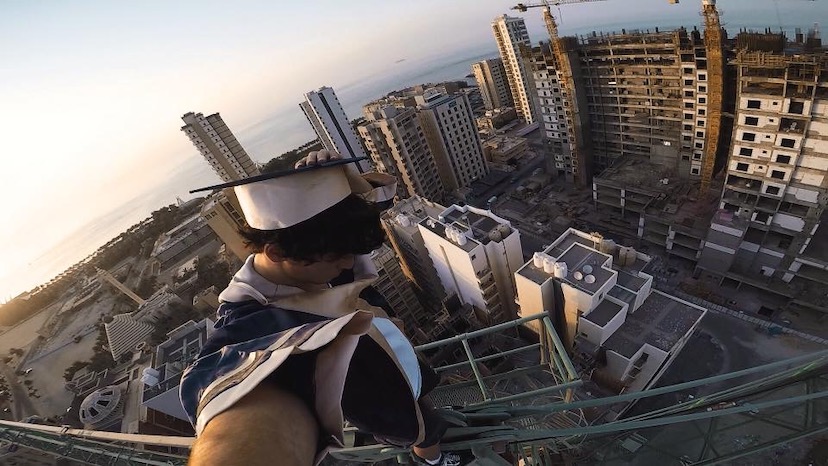
Although Spark was always monkeying around as a child, he had no gymnastics background and had never done a flip before that day on Marina beach. “I went from zero to hero. I got three basic flips in one day – front, back and side flip. All landed clean,” he says. “We didn’t have gyms. We didn’t have someone to train us. Sometimes I used to skip school and come to the beach and train.”
“Kuwait is a massive urban jungle and a paradise for urban climbing,” he says in his docu-series The Edge. He has climbed every iconic tower in Kuwait and believes that it is a misconception that parkour is a dangerous sport. “I don’t take that leap of faith that people think I do,” he says. “When you see me jumping from one building to another it is because I have trained on the ground for it. I calculate how many steps is in a jump. I am ready for it.”
Spark explores the buildings first before he does the stunts you see on his video. He checks the ledges, he checks the structure. If he feels it is unsafe he leaves the building alone. So why does he do it? “I love adventure. I like hiking. And I found the same feeling exploring buildings,” he says. “It’s all about living out of the box, about not living normal.” And he says there are real benefits: “You become physically and mentally stronger. You become more self-confident every time.”
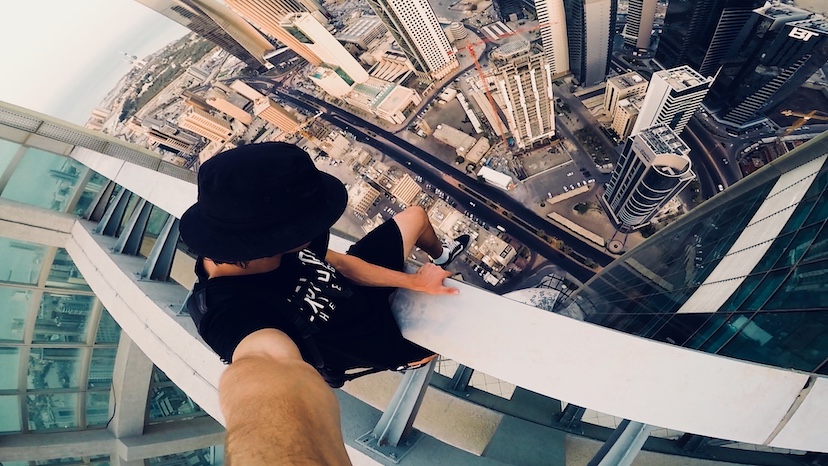
Fear, he says was only an issue in the very beginning. “The very first time I had shaky legs. But it was a really good feeling,” he says. I asked him about the issue of trespassing – that parkour which involves jumping on buildings is seen as a borderline criminal activity. Spark himself was arrested twice – once for climbing the highest crane in Kuwait. “The law is something someone wrote. But the law does not understand your intention for climbing stuff. For me it is just a wall of concrete. It’s that simple. I am not breaking into a family’s dinner in their house. So why would you put me in jail for just climbing this thing.”
He also feels that the idea the sport is just for young men is misplaced. “Parkour is something in us that we have from when we are young. When we grow up, we stop doing it,” he says.
I ask him what would he say to a 50 or 60-year old man or woman who wanted to start parkour. “That’s great,” he said.” You can start from basics. Parkour is about enjoyment; it is not about competition unlike other sports. This is why I like it. Football is about competing. Who is the best? But in Parkour it is different. You do it for pleasure.”
He points out there are female athletes in the USA, Egypt and Lebanon and he is happy to train women. He is currently back in Kuwait visiting his family and is deeply saddened about the demolition of the Sawaber complex. “Every free runner who started here in Kuwait all went to train there first. And any guest who came to Kuwait we took them to train over there,” he says. “I left a lot of good memories there. The demolishing of Sawaber is like cutting trees for monkeys.”
On his Instagram he describes himself as a homeless free runner living on rooftops. So where does he go from here? “My goal for now is getting sponsorship,” he says. If an opportunity came up to open a parkour gym in Kuwait, he would consider moving back.
After graduating from school, Spark left Kuwait. He felt vindicated on exiting the country when he was approached by an airport police officer who asked if he was the guy who climbed all the tall buildings. When Spark confirmed it was him the police officer asked him what he was going to do now. “I said I was going to go and do my stuff in other countries. The police officer smiled and said good luck.”
Want to see more gravity defying stunts? Follow Spark on instagram @pk_spark or his YouTube channel Pk spark. Featured image courtesy of Spark.



